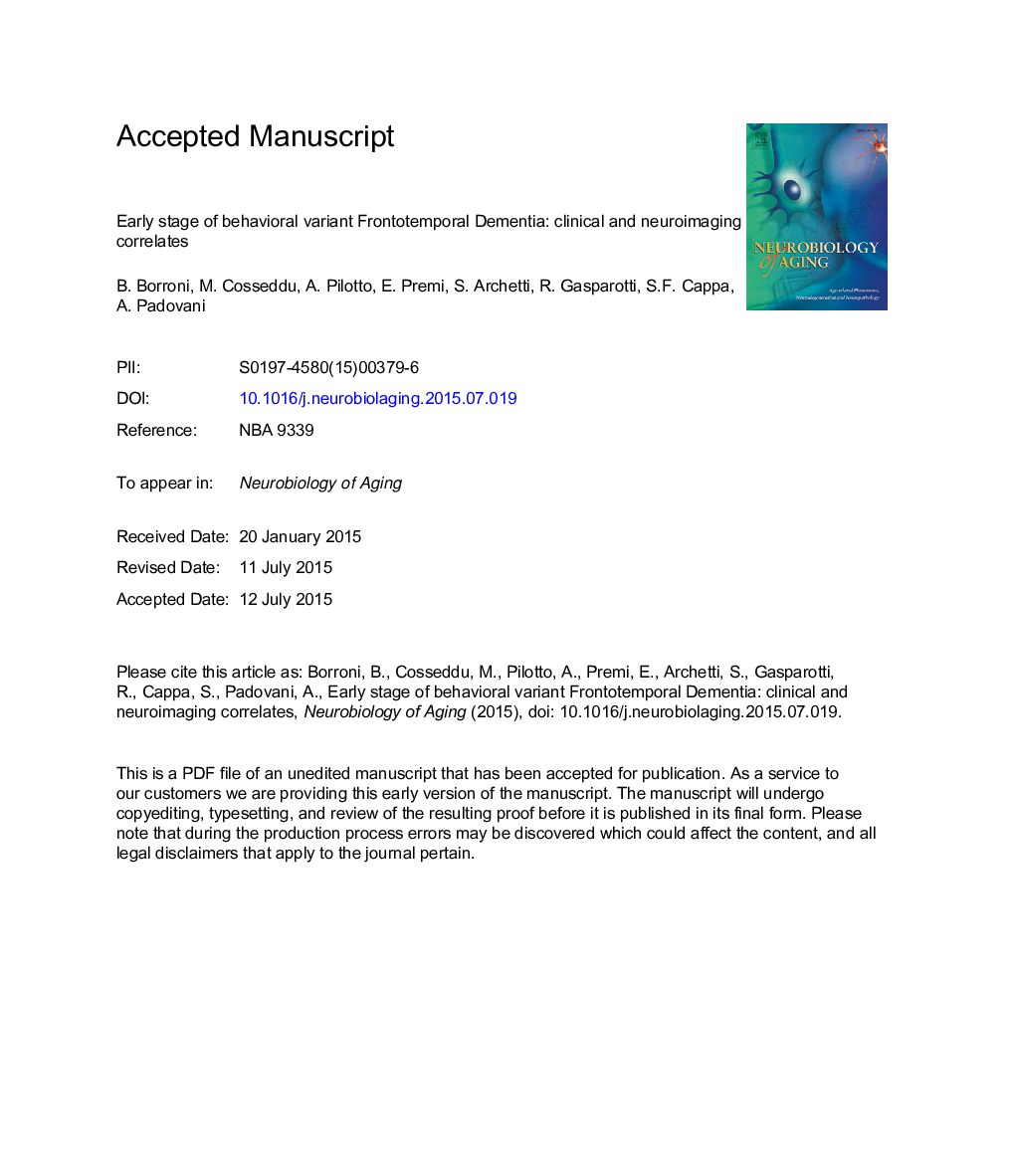| Article ID | Journal | Published Year | Pages | File Type |
|---|---|---|---|---|
| 6803803 | Neurobiology of Aging | 2015 | 28 Pages |
Abstract
The early stages of behavioral variant frontotemporal dementia (bvFTD) are still not completely characterized. In a consecutive series of patients with probable bvFTD diagnosis confirmed by follow-up, we retrospectively evaluated the features at onset. Patients were reclassified according to presenting features and current diagnostic criteria into probable and possible bvFTD. The term “pre-bvFTD” was adopted for patients with cognitive and/or behavioral impairment not fulfilling bvFTD criteria and no deficits in activities of daily living. One hundred ninety-four subjects were included; at first visit, 70% (n = 136) patients were already classified as probable bvFTD. Of the remaining 30% (n = 58), 60% fulfilled criteria for possible bvFTD, while 40% did not, and were classified as pre-FTD. The neuropsychological pattern in possible bvFTD and pre-bvFTD was similar, although possible bvFTD showed more behavioral abnormalities. Pre-bvFTD subjects had frontotemporal gray matter atrophy, although less extensive than possible bvFTD. Conclusively, most bvFTD patients fulfill current diagnostic criteria at first admission, whereas a relatively small group is characterized by mild behavioral and/or cognitive abnormalities in spite of frontotemporal gray matter atrophy. Our preliminary findings will require a validation in prospective studies involving larger samples of patients.
Related Topics
Life Sciences
Biochemistry, Genetics and Molecular Biology
Ageing
Authors
Barbara Borroni, Maura Cosseddu, Andrea Pilotto, Enrico Premi, Silvana Archetti, Roberto Gasparotti, Stefano Cappa, Alessandro Padovani,
